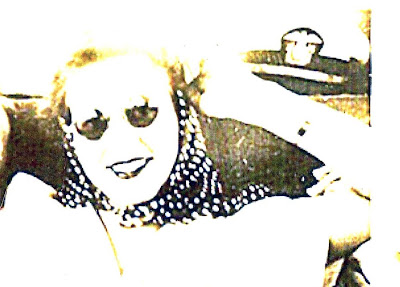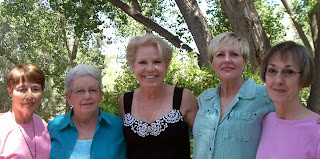Many bloggers write only of embroidery. Here are a few blogs that showcase lovely snippets of such work:
Sue's Tree House
Lucykate Crafts
Karina's bird-embroidery
Cates Linens
 This is a work shirt which I repurposed, using nine different pieces of vintage embroidery found on antique table runners and linen napkins to cover the front panels, back yoke and sleeve cuffs. Some of the embroidery was so old it was frayed, so using the Wonder Under product helped insure fabric stability.
This is a work shirt which I repurposed, using nine different pieces of vintage embroidery found on antique table runners and linen napkins to cover the front panels, back yoke and sleeve cuffs. Some of the embroidery was so old it was frayed, so using the Wonder Under product helped insure fabric stability.And here is a picture of a new pattern I am working on for application to the front of a plain white blouse, followed by embroidery work in various stitches, finishing off with crayon coloring on the shirt:
 The fairie was sketched by Michelle at Michelle's Blog. She will dress up that shirt front, for sure.
The fairie was sketched by Michelle at Michelle's Blog. She will dress up that shirt front, for sure.
After it is embroidered, I will color it with crayons using this technique from the TintedLinenTutorial:
Thanks again to Tracy at GiggleFace Studios for her tutorial on using crayons on fabric....Trace your pattern onto your fabric very lightly with a pencil or a water soluble marker... Tape the fabric down on the corners to a flat smooth surface.Take out your crayons and color! You may need to color a little harder in the fabric because the ironing will soften the crayon. Experiment with shading to add depth or only color a few things to really make a bold statement. Try to color in the same direction because the strokes will show (unless this is the effect you are trying to achieve).
When you are satisfied with yourself, sandwich the fabric between 2 pieces of plain paper. Set your iron to the "cotton" setting. Press the fabric sandwich slowly and smoothly. This will 'set' the crayon. You may need to press a few times to get the results you want. I did mine a few times to soften and melt the crayon for a smoother effect. From this point you can either back the design with another piece of fabric or place in an embroidery hoop. Embroider your heart away! Use different stitches,beads, sequins, etc.
I have several items of vintage embroidery that I would love to give to others. Drop me a comment or email me with your address if you would like some!
 Incorporating vintage hankies on pillows top:
Incorporating vintage hankies on pillows top: 






 The center of the magenta colored ornament at the lower right of the picture was made with a small crochet hook and sock yarn, again using the same technique. Then the small pink rose was sewn into the center of the larger crocheted flower. If made about the size of a US quarter, they will look cute on a baby sweater.
The center of the magenta colored ornament at the lower right of the picture was made with a small crochet hook and sock yarn, again using the same technique. Then the small pink rose was sewn into the center of the larger crocheted flower. If made about the size of a US quarter, they will look cute on a baby sweater.



 USA, KA4WWN, JOHN P HENIFORD, 1729 CRICKET RUN RD, YORK, SC 29745; from his email:
USA, KA4WWN, JOHN P HENIFORD, 1729 CRICKET RUN RD, YORK, SC 29745; from his email:

 Stretched canvas painting continues after a week of work with further definition of petals:
Stretched canvas painting continues after a week of work with further definition of petals:
 It is about half finished at this point. It is 30" x 40", and there is still lots to do on it. Grounding the leaves from the base is a hurdle that needs to be overcome. Any helpful suggestions?
It is about half finished at this point. It is 30" x 40", and there is still lots to do on it. Grounding the leaves from the base is a hurdle that needs to be overcome. Any helpful suggestions?











 The pictures above were taken in January, 2009 in Auckland, New Zealand. Don't those colors create a riot in your head? Day
The pictures above were taken in January, 2009 in Auckland, New Zealand. Don't those colors create a riot in your head? Day  And it was completed yesterday (except for the glazing process), with a picture of the results below. It took four months to complete, what with my busy schedule of a retired diva.
And it was completed yesterday (except for the glazing process), with a picture of the results below. It took four months to complete, what with my busy schedule of a retired diva.








 Baking potatoes in a bag is a novel idea, and the potatoes are delicious...there must be some magic in the process!
Baking potatoes in a bag is a novel idea, and the potatoes are delicious...there must be some magic in the process! 
 The above renedition, found at
The above renedition, found at  On
On 



